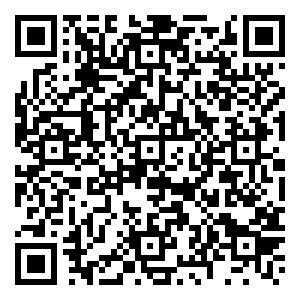UV-LEDs技术在食品杀菌保鲜领域中的应用研究进展
Research advance on the application of ultraviolet light-emitting diodes technology in food sterilization and preservation
-
摘要: 食品在生产和消费环节极易受到微生物污染,严重影响其安全性和品质。紫外发光二极管(Ultraviolet Light-emitting Diodes,UV-LEDs)作为传统紫外汞灯的替代光源,具有波长可调、绿色环保、安全高效等优点。对该技术在食品杀菌保鲜领域的应用、其对食品品质的影响及与其他非热杀菌技术协同杀菌的应用研究进行了综述,认为:UV-LEDs技术不仅能够有效杀灭食源性致病菌和腐败菌,而且可以较好地保持食品品质,将其与微酸性电解水、Cl2、超声波等协同使用,可进一步增强其杀菌效果。然而,该技术在应用过程中存在穿透力弱、处理量小等问题,今后应在处理工艺参数优化和装置方面进行深入研究,以期为UV-LEDs技术在食品安全控制领域中的实际应用提供参考。Abstract: Food is easily contaminated by microorganism during production and consumption,which causes serious adverse effect on its safety and quality.As an alternative source of traditional ultraviolet mercury lamp,ultraviolet light-emitting diodes (UV-LEDs) have many advantages, such as adjustable wavelength, environmentally friendly, safe and efficient.This paper aimed to review the application of UV-LEDs in the field of food sterilization and preservation,its influence on food quality and its application progress in collaboration with other non-thermal sterilization technologies.The results indicated that UV-LEDS could not only effectively sterilize foodborne pathogenic bacteria and spoilage bacteria,but also could well maintain the quality of food products.The bactericidal effect could be further enhanced when it is used in combination with other technologies such as slightly acidic electrolytic water,Cl2 and ultrasound. However,UV-LEDs have some disadvantages,such as weak penetration and small processing capacity.More attention should be paid to the optimization of processing parameters and equipment development in the future.This paper provides reference for the practical application of UV-LEDs in the field of food safety control.
-
-
[1]
SANLİER N, SORMAZ Ü, GÜNEŞ E.The effect of food safety education on food safety knowledge, attitudes, behaviors of individuals who work in food and beverage departments in Turkey[J].International Journal of Gastronomy and Food Science, 2020, 22:100259.
-
[2]
MOSTAFIDI M, SANJABI M R, SHIRKHAN F, et al.A review of recent trends in the development of the microbial safety of fruits and vegetables[J].Trends in Food Science & Technology, 2020, 103:321-332.
-
[3]
YANG P Q, RAO L, ZHAO L, et al.High pressure processing combined with selected hurdles:Enhancement in the inactivation of vegetative microorganisms[J].Comprehensive Reviews in Food Science and Food Safety, 2021, 19(2):311-331.
-
[4]
樊丽华, 侯福荣, 马晓彬, 等.超声波及其辅助灭菌技术在食品微生物安全控制中的应用[J].中国食品学报, 2020, 20(7):326-336.
-
[5]
BOURKE P, ZIUZINA D, BOEHM D, et al.The potential of cold plasma for safe and sustainable food production[J].Trends in Biotechnology, 2018, 36(6):615-626.
-
[6]
PEDRÓS-GARRIDO S, CONDÓN-ABANTO S, CLEMENTE I, et al.Efficacy of ultraviolet light (UV-C) and pulsed light (PL) for the microbiological decontamination of raw salmon (Salmo salar) and food contact surface materials[J].Innovative Food Science & Emerging Technologies, 2018, 50:124-131.
-
[7]
SEOK J H, HA J W.Synergistic mechanism and enhanced inactivation exhibited by UVA irradiation combined with citric acid against pathogenic bacteria on sliced cheese[J].Food Control, 2021, 124(3):107861.
-
[8]
KOUTCHMA T, POPOVIC V, ROS-POLSKI V, et al.Effects of ultraviolet light and high-pressure processing on quality and health-related constituents of fresh juice products[J].Comprehensive Reviews in Food Science and Food Safety, 2016, 15(5):844-867.
-
[9]
GEVEKE D J.Inactivation of yeast and bacteria using combinations of radio frequency electric fields and ultraviolet light[J].Journal of Food Processing and Preservation, 2020, 44(4):e14385.
-
[10]
TATIANA K.Advances in ultraviolet light technology for non-thermal processing of liquid foods[J].Food and Bioprocess Technology, 2009, 2(2):138-155.
-
[11]
SONG K, MOHSENI M, TAGHIPOUR F.Application of ultraviolet light-emitting diodes (UV-LEDs) for water disinfection:A review[J].Water Research, 2016, 94:341-349.
-
[12]
GORA S L, RAUCH K D, ONTIVEROS C C, et al.Inactivation of biofilm-bound Pseudomonas aeruginosa bacteria using UVC light emitting diodes(UVC-LEDs)[J].Water Research, 2019, 151:193-202.
-
[13]
HAUGHTON P N, LYNG J G, CRONIN D A, et al.Efficacy of UV light treatment for the microbiological decontamination of chicken, associated packaging, and contact surfaces[J].Journal of Food Protection, 2011, 74(4):565-572.
-
[14]
GHATE V S, NG K S, ZHOU W, et al.Antibacterial effect of light emitting diodes of visible wavelengths on selected foodborne pathogens at different illumination temperatures[J].International Journal of Food Microbiology, 2013, 166(3):399-406.
-
[15]
D'SOUZA C, YUK H G, KHOO G H, et al.Application of light-emitting diodes in food production, postharvest preservation, and microbiological food safety[J].Comprehensive Reviews in Food Science and Food Safety, 2015, 14(6):719-740.
-
[16]
PRASAD A, DU L, ZUBAIR M, et al.Applications of light-emitting diodes (LEDs) in food processing and water treatment[J].Food Engineering Reviews, 2020, 12(3):268-289.
-
[17]
王恺, 孙小卫, 郑凡凯, 等.量子点发光二极管:CN201921091313.7[P].2020-01-07.
-
[18]
GUPTA S D, JATOTHU B.Fundamentals and applications of light-emitting diodes (LEDs) in in vitro plant growth and morphogenesis[J].Plant Biotechnology Reports, 2013, 7(3):211-220.
-
[19]
HAMAMOTO A, MORI M, TAKAHASHI A, et al.New water disinfection system using UVA light-emitting diodes[J].Journal of Applied Microbiology, 2007, 103(6):2291-2298.
-
[20]
HINDS L, O'DONNELL C P, AKHTER M, et al.Principles and mechanisms of ultraviolet light emitting diode technology for food industry applications[J].Innovative Food Science & Emerging Technologies, 2019, 56(C):102-153.
-
[21]
范林林, 左进华, 高丽朴, 等.LED应用于蔬菜保鲜领域的研究进展[J].安徽农业科学, 2017, 45(8):89-92
, 97. -
[22]
KEBBI Y, MUHAMMAD A I, SANT'ANA A S, et al.Recent advances on the application of UV-LED technology for microbial inactivation:Progress and mechanism[J].Comprehensive Reviews in Food Science and Food Safety, 2020, 19(6):3501-3527.
-
[23]
SOUZA V R D, POPOVI V, WARRINER K, et al.A comparative study on the inactivation of Penicillium expansum spores on apple using light emitting diodes at 277 nm and a low-pressure mercury lamp at 253.7 nm[J].Food Control, 2019, 110(C):107039.
-
[24]
SORO A B, WHYTE P, BOLTON D J, et al. Application of a LED-UV based light technology for decontamination of chicken breast fillets:Impact on microbiota and quality attributes[J].LWT-Food Science and Technology, 2021, 145:111297.
-
[25]
FAN L M, LIU X, DONG X P, et al. Effects of UVC light-emitting diodes on microbial safety and quality attributes of raw tuna fillets[J].LWT-Food Science and Technology, 2020, 139:110553.
-
[26]
KIM S J, KIM D K, KANG D H. Using UVC light-emitting diodes at wavelengths of 266 to 279 nanometers to inactivate foodborne pathogens and pasteurize sliced cheese[J].Applied and Environmental Microbiology, 2015, 82(1):11-17.
-
[27]
BRITZ S, GASKA I, SHTURM I, et al. Deep ultraviolet (DUV) light-emitting diodes (LEDs) to maintain freshness and phytochemical composition during postharvest storage[C]//Lasers & Electro-optics. In Proceedings of the CLEO:2013. San Jose:San Jose Convention Center, 2013:9-14.
-
[28]
AIHARA M, LIAN X, SHIMOHATA T, et al. Vegetable surface sterilization system using UVA light-emitting diodes[J].Journal of Medical Investigation, 2014, 61(3/4):285-290.
-
[29]
KIM D K, KANG D H. Inactivation efficacy of a sixteen UVC LED module to control foodborne pathogens on selective media and sliced deli meat and spinach surfaces[J].LWT-Food Science and Technology, 2020, 130:109422.
-
[30]
JIANG Y R, AI C M, LIAO X Y, et al. Effect of slightly acidic electrolyzed water (SAEW) and ultraviolet light illumination pretreatment on microflora inactivation of coriander[J].LWT-Food Science and Technology, 2020, 132:109898.
-
[31]
KIM D K, KANG D H.Elevated inactivation efficacy of a pulsed UVC light-emitting diode system for foodborne pathogens on selective media and food surfaces[J].Applied and Environmental Microbiology, 2018, 84(20):e01340-18.
-
[32]
ZHAI Y F, TIAN J L, PING R N, et al. Effects of ultraviolet-C light-emitting diodes at 275 nm on inactivation of Alicyclobacillus acidoterrestris vegetative cells and its spores as well as the quality attributes of orange juice[J].Food Science and Technology International, 2020, 27(4):334-343.
-
[33]
BAYKU G, PELVAN A M, SEVCAN U.Effects of ultraviolet-light emitting diodes(UV-LEDs) on microbial inactivation and quality attributes of mixed beverage made from blend of carrot, carob, ginger, grape and lemon juice[J].Innovative Food Science & Emerging Technologies, 2020, 67:102572.
-
[34]
AKGÜN M P, ÜNLÜTÜRK S.Effects of ultraviolet light emitting diodes (LEDs) on microbial and enzyme inactivation of apple juice[J].International Journal of Food Microbiology, 2017, 260:65-74.
-
[35]
XIANG Q S, FAN L M, ZHANG R, et al.Effect of UVC light-emitting diodes on apple juice:Inactivation of Zygosaccharomyces rouxii and determination of quality[J].Food Control, 2019, 111(C):107082.
-
[36]
GUERRERO-BELTRA J A, WELTI-CHANES J, BARBOSA-CANOVAS G V.Ultraviolet-C light processing of grape, cranberry and grapefruit juices to inactivate Saccharomyces cerevisiae[J].Journal of Food Process Engineering, 2009, 32(6):916-932.
-
[37]
刘悦, 贺稚非, 李洪军, 等.非热杀菌技术在肉及肉制品中的应用研究进展[J].肉类研究, 2020, 34(10):88-95.
-
[38]
HAUGHTON P N, GRAU E G, LYNG J, et al. Susceptibility of Campylobacter to high intensity near ultraviolet/visible 395±5 nm light and its effectiveness for the decontamination of raw chicken and contact surfaces[J]. International Journal of Food Microbiology, 2012, 159(3):267-273.
-
[39]
龚蕾, 韩智, 程慧, 等.谷物及其制品中脱氧雪腐镰刀菌烯醇及其衍生物的检测及污染规律分析[J].食品科学, 2020, 41(4):307-312.
-
[40]
SUBEDI S, DU L H, PRASAD A, et al. Inactivation of Salmonella and quality changes in wheat flour after pulsed light-emitting diode (LED) treatments[J].Food and Bioproducts Processing, 2020, 121:166-177.
-
[41]
DU L H, PRASAD A J, GANZLE M, et al. Inactivation of Salmonella spp. in wheat flour by 395 nm pulsed light emitting diode(LED)treatment and the related functional and structural changes of gluten[J].Food Research International, 2020, 127(C):108716.
-
[42]
蓝蔚青, 刘琳, 孙晓红, 等.酸性电解水发生机理及在水产领域中的应用研究进展[J].食品与发酵工业, 2020, 46(4):294-298.
-
[43]
KEKLIK N M. Treatment of pastirma with pulsed UV light:Modeling of staphylococcus aureus inactivation and assessment of quality changes[J]. Food Science and Technology International, 2019, 26(2):185-198.
-
[44]
KIM D K, KANG D H.Effect of surface characteristics on the bactericidal efficacy of UVC LEDs[J].Food Control, 2020, 108(C):106869.
-
[45]
LEE H, JIN Y, HONG S.Understanding possible underlying mechanism in declining germicidal efficiency of the UV-LED reactor[J].Journal of Photochemistry and Photobiology B-Biology, 2018, 185:136-142.
-
[46]
YE Z Y, WANG S, CHEN T, et al.Inactivation mechanism of Escherichia coli induced by slightly acidic electrolyzed water[J].Scientific Reports, 2017, 7(1):6279.
-
[47]
BING S, ZANG Y T, LI Y J, et al.The synergistic effects of slightly acidic electrolyzed water and UV-C light on the inactivation of Salmonella enteritidis on contaminated eggshells[J].Poultry Science, 2019, 98(12):6914-6920.
-
[48]
LI G Q, HUO Z Y, WU Q Y, et al.Synergistic effect of combined UV-LED and chlorine treatment on Bacillus subtilis spore inactivation[J].Science of the Total Environment, 2018, 639:1233-1240.
-
[49]
MIN C, GANDHI A, HWANG T M, et al.Investigating synergism during sequential inactivation of MS-2 phage and Bacillus subtilis spores with UV/H2O2 followed by free chlorine[J].Water Research, 2011, 45(3):1063-1070.
-
[50]
ZHOU X Q, LI Z F, LAN J R, et al.Kinetics of inactivation and photoreactivation of Escherichia coli using ultrasound-enhanced UV-C light-emitting diodes disinfection[J].Ultrasonics Sonochemistry, 2016, 35:471-477.
-
[51]
ZHOU X, GUO H, LI Z, et al.Experimental study on the disinfection efficiencies of a continuous-flow ultrasound/ultraviolet baffled reactor[J].Ultrasonics Sonochemistry, 2015, 27:81-86.
-
[52]
DE PAIVA L B, GOLDBECK R, DOS SANTOS W D, et al.Ferulic acid and derivatives:Molecules with potential application in the pharmaceutical field[J].Brazilian Journal of Pharmaceutical Sciences, 2013, 49(3):395-411.
-
[53]
SHIRAI A, WATANABE T, MATSUKI H.Inactivation of foodborne pathogenic and spoilage microorganisms using ultraviolet-A light in combination with ferulic acid[J].Letters in Applied Microbiology, 2017, 64(2):96.
-
[54]
GRAF E.Antioxidant potential of ferulic acid[J].Free Radical Biology & Medicine, 1992, 13(4):435-448.
-
[55]
SHIRAI A, KAJIURA M, OMASA T.Synergistic photobactericidal activity based on ultraviolet-A irradiation and ferulic acid derivatives[J].Photochemistry and Photobiology, 2015, 91(6):1422-1428.
-
[56]
SONG K, TAGHIPOUR F, MOHSENI M.Microorganisms inactivation by wavelength combinations of ultraviolet light-emitting diodes (UV-LEDs)[J].Science of the Total Environment, 2019, 665:1103-1110.
-
[57]
GREEN A, POPOVIC V, PIERSCIANOWSKI J, et al.Inactivation of Escherichia coli, Listeria and Salmonella by single and multiple wavelength ultraviolet-light emitting diodes[J].Innovative Food Science & Emerging Technologies, 2018, 47:353-361.
-
[1]
-

 点击查看大图
点击查看大图
计量
- PDF下载量: 54
- 文章访问数: 5198
- 引证文献数: 0



 下载:
下载:
